Wahoo Elemnt and Garmin Edge bike computers are deservedly popular and they dominate the market, despite the increasing competition offered by brands such as Hammerhead and Bryton.
When it comes to which bike computer you should choose from one of these brands, there are several things to consider.
Garmin has a larger range of products catering to different riders’ needs and budgets, but Wahoo has several advantages including added extras and a refined interface.
In this guide, we take you through the details and features that make Garmin and Wahoo head units some of the best bike computers and how to choose the right one for you.
Wahoo Elemnt vs Garmin Edge ranges
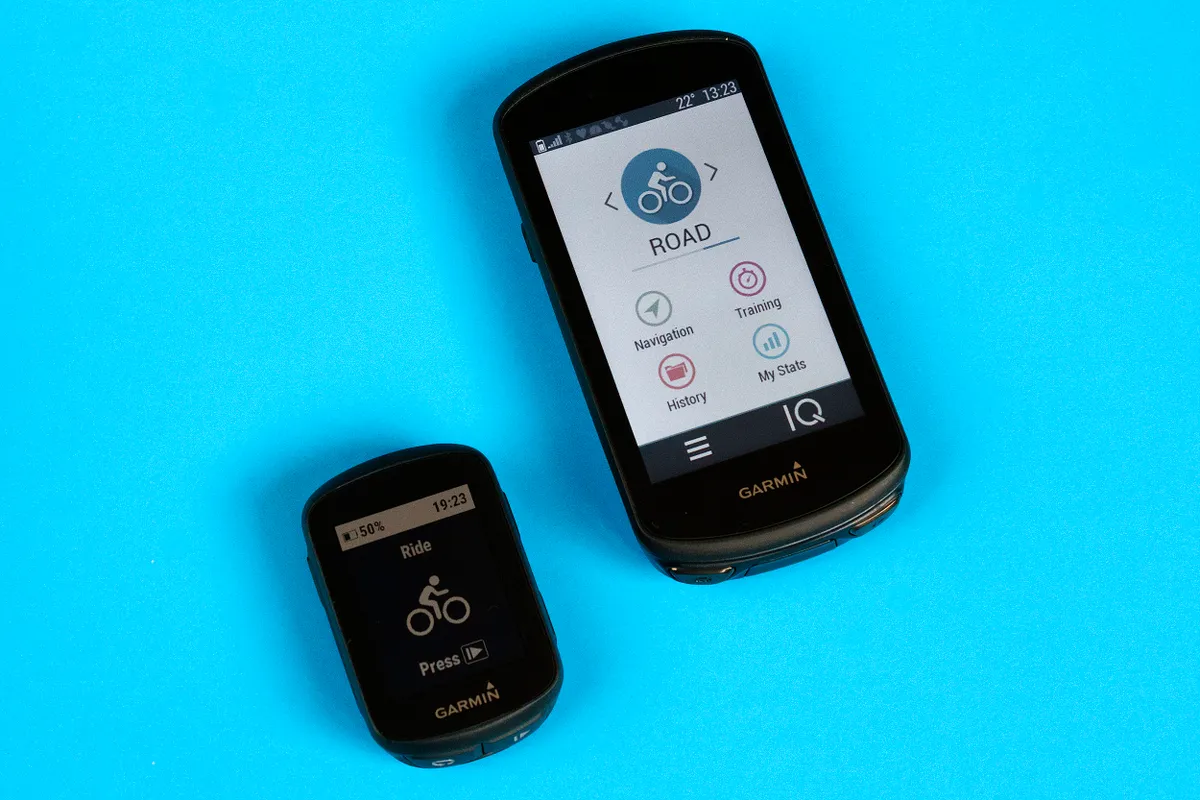
Although it’s slimmed down its range of Edge computers recently, Garmin still offers six models. That starts with the compact, relatively inexpensive Edge 130 Plus. It’s got a monochrome screen and is controlled via five buttons on its sides and bottom edge.
Move up the range and the Garmin Edge 530 is larger and has a colour screen, although it’s still button controlled. The Edge 830 is the same size as the Edge 530 but has a touchscreen, while the Edge Explore 2 has a slightly larger touchscreen. The larger-format Edge 1030 Plus has now been eclipsed by the Garmin Edge 1040 at the top of the range.
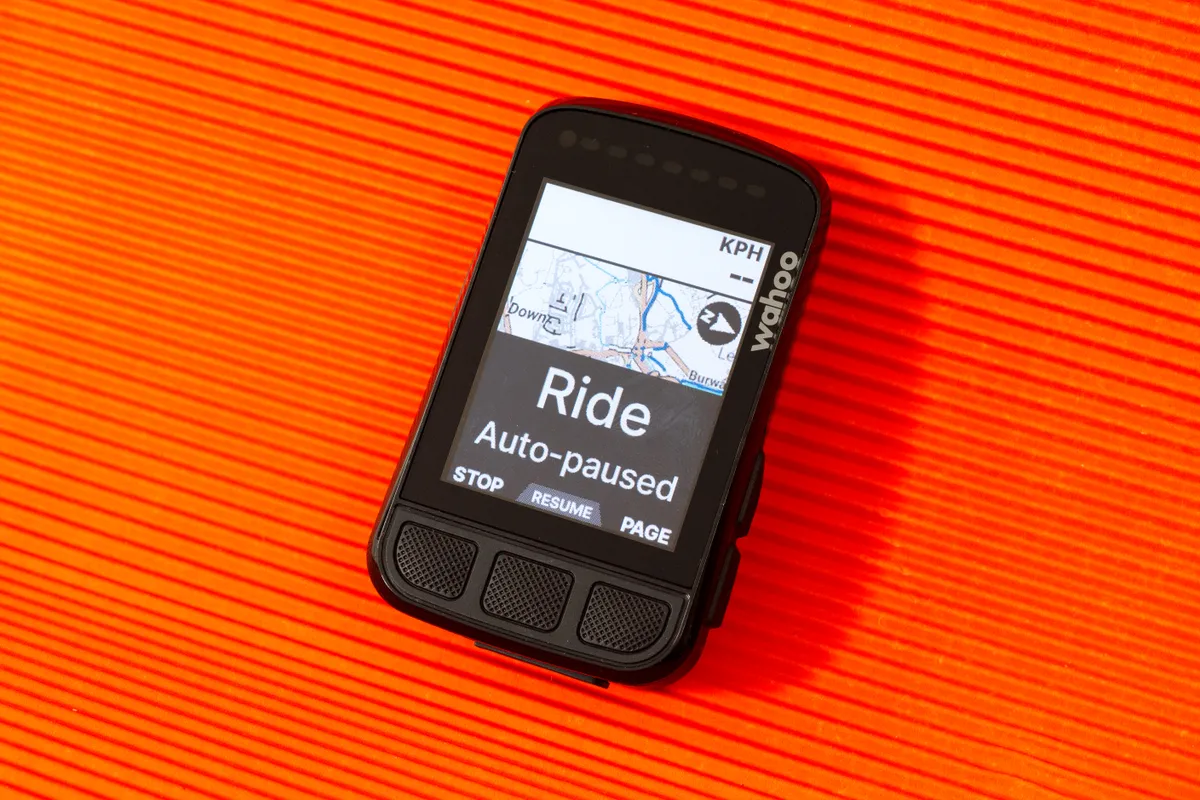
In contrast, Wahoo offers only two Elemnt computers: the Elemnt Bolt and the Elemnt Roam. They’re both mid-sized non-touchscreen colour computers controlled by an array of six buttons, three on the face and three on the sides of the computer’s body.
As well as the screen, Wahoo includes one array of LED lights on the Elemnt Bolt and two on the Elemnt Roam. These can be programmed to display different information, including your heart rate zone or information about upcoming turns if you’re following a route.
Battery life
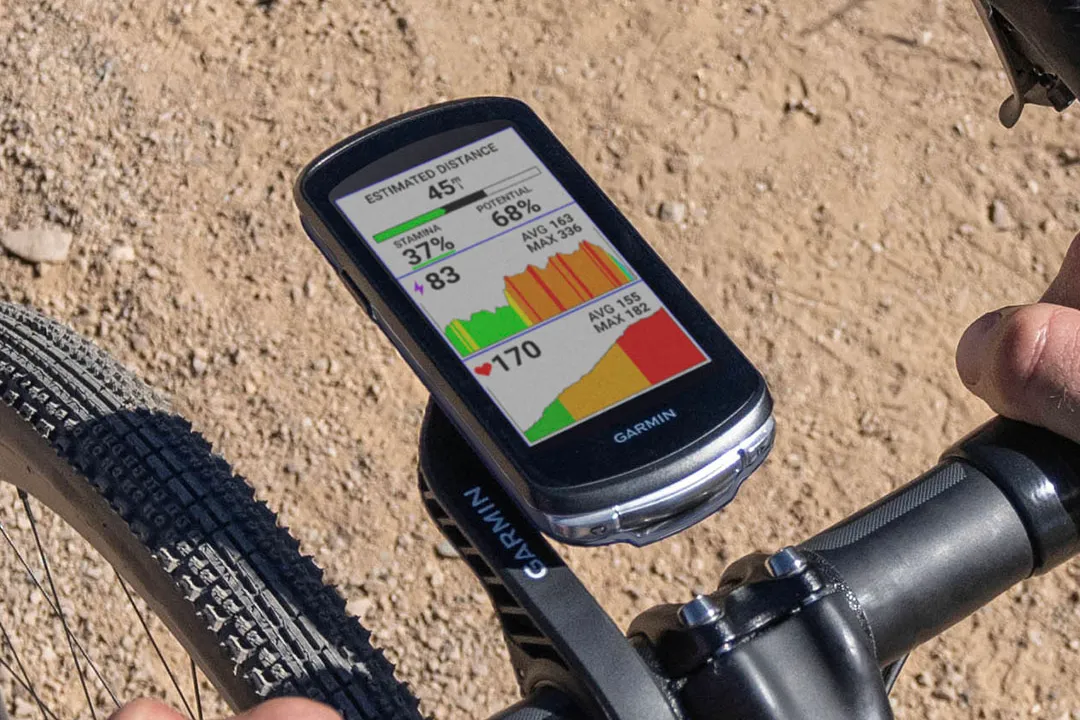
Garmin’s battery life depends on the model; the smallest Edge 130 Plus has a claimed 12-hour run time and that stretches up to 24 hours for the Edge 1030 Plus.
The latest Edge 1040 is available with solar charging – like the Garmin Fenix 7 Sapphire Solar smartwatch – to increase battery life still further, with a claimed seven-day run time on a single charge when topped up by eight hours a day of riding in daylight.
The Wahoo computers sit somewhere in the middle, with the Elemnt Roam having a 17-hour quoted battery life and the Elemnt Bolt 15 hours.
How much do Garmin and Wahoo computers cost?
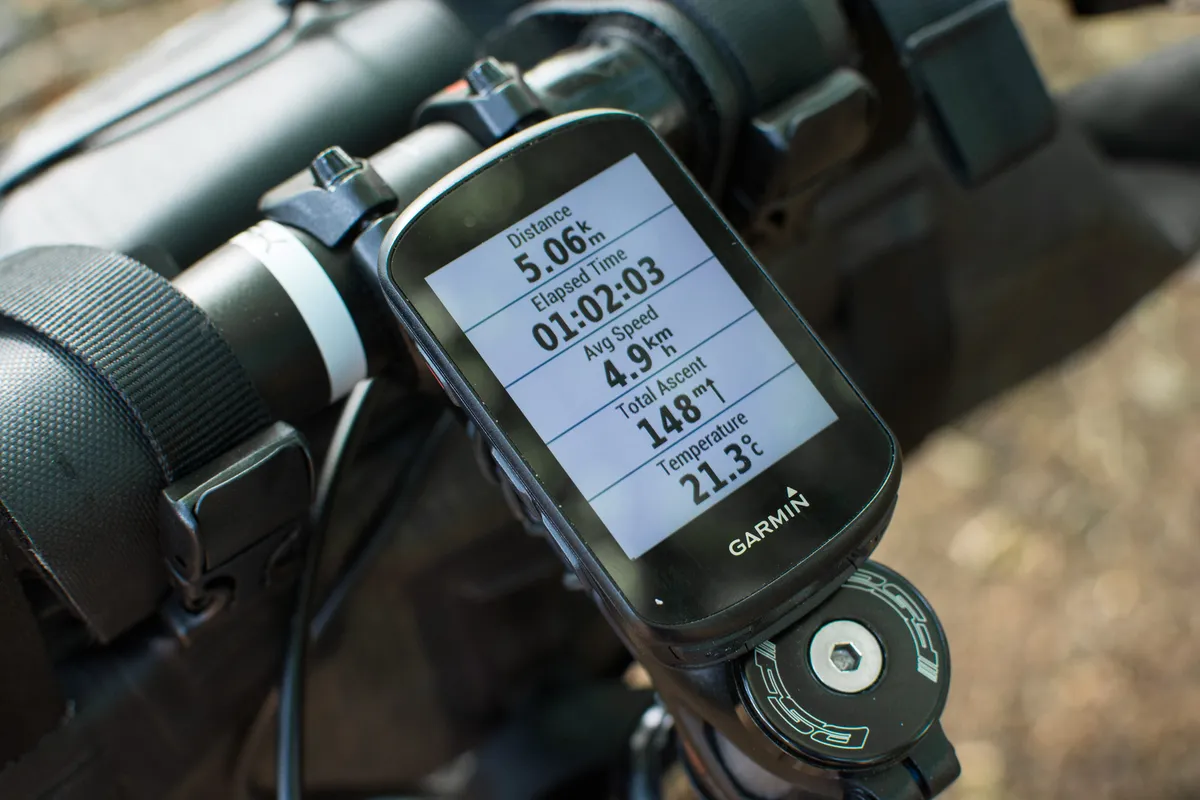
The Wahoo Elemnt computers closely track the £260 / $300 Garmin Edge 530 and are comparable in size. The Elemnt Bolt is smaller and costs £265 / $300, the Elemnt Roam is slightly larger and costs £350 / $400.
Garmin’s range has a wider spread of prices, from the £170 / $200 Edge 130 Plus up to the £630 / $750 Edge 1040 in its solar-charged version.
Mounting and extras

Wahoo scores on its mounts for the Elemnt range. The computers come with a forward mount with half-turn engagement. Although they are plastic, the mounts integrate with the computers cleanly, making for a smooth, aero appearance. You can screw the computer to the mount for safety and peace of mind if you leave your bike.
In contrast, Garmin computers come with a plastic half-turn bar-top mount secured by two rubber straps as standard. If you want an out-front mount (due to their large size, it’s pretty much a necessity for the Edge 1030 Plus and Edge 1040) you need to buy it separately.
You can buy the Garmin Edge and Wahoo Elemnt computers as a bundle. Depending on the model, this usually includes an HRM strap, speed and cadence sensors and, for Garmin MTB bundles, a silicone case, MTB mount and remote.
Garmin and Wahoo computers support ANT+ and BLE connectivity, while higher-spec models from both brands have built-in WiFi, so you can upload rides to apps without having to link them to your smartphone.
Configuring Wahoo and Garmin computers
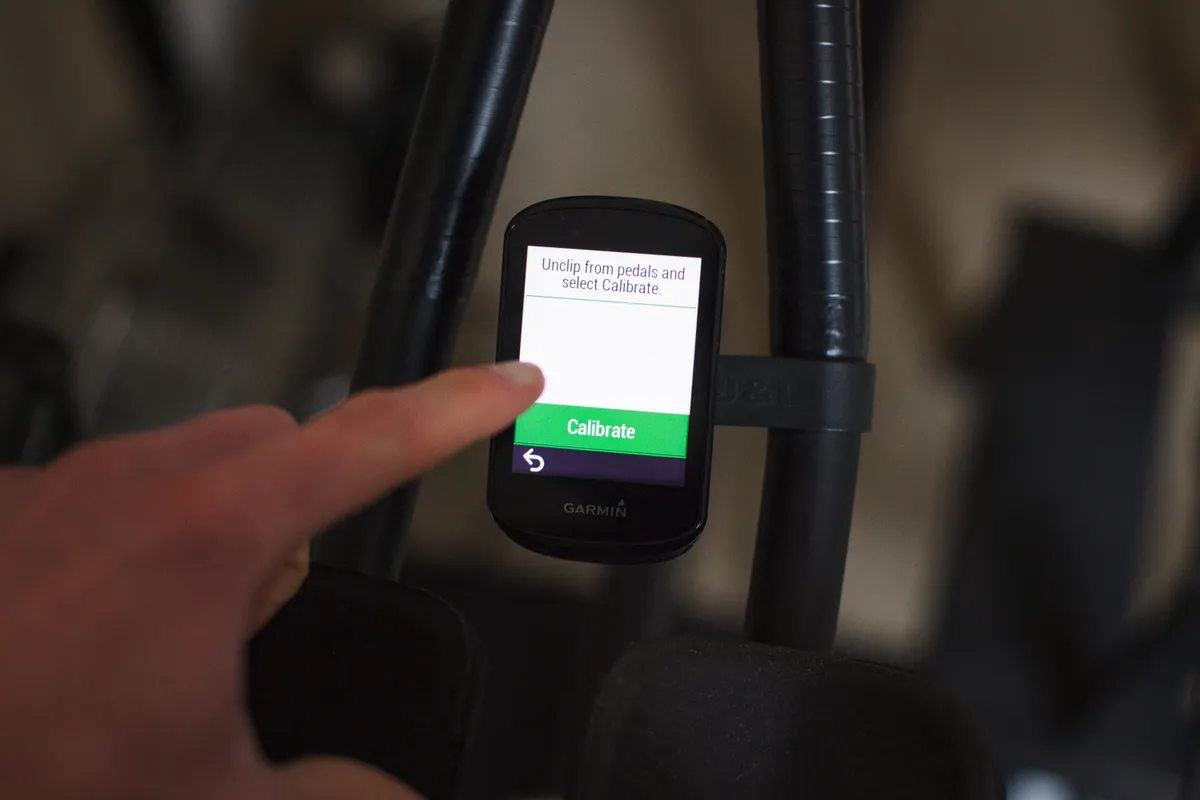
Although Garmin has upped its game on setup and configuration, Wahoo still wins out on tight integration with its smartphone app. This enables you to set up and customise pretty much everything via the app rather than on the device itself, although that’s still an option. You can also port your configuration over if you buy a new Wahoo computer.
Garmin is catching up with an easy phone-based setup and can move your data over from an older Garmin device too. There is also phone-app control of some settings, but it’s not as easy as with Wahoo’s app and you still need to use fiddly on-device menus to customise many features.
Wahoo and Garmin features
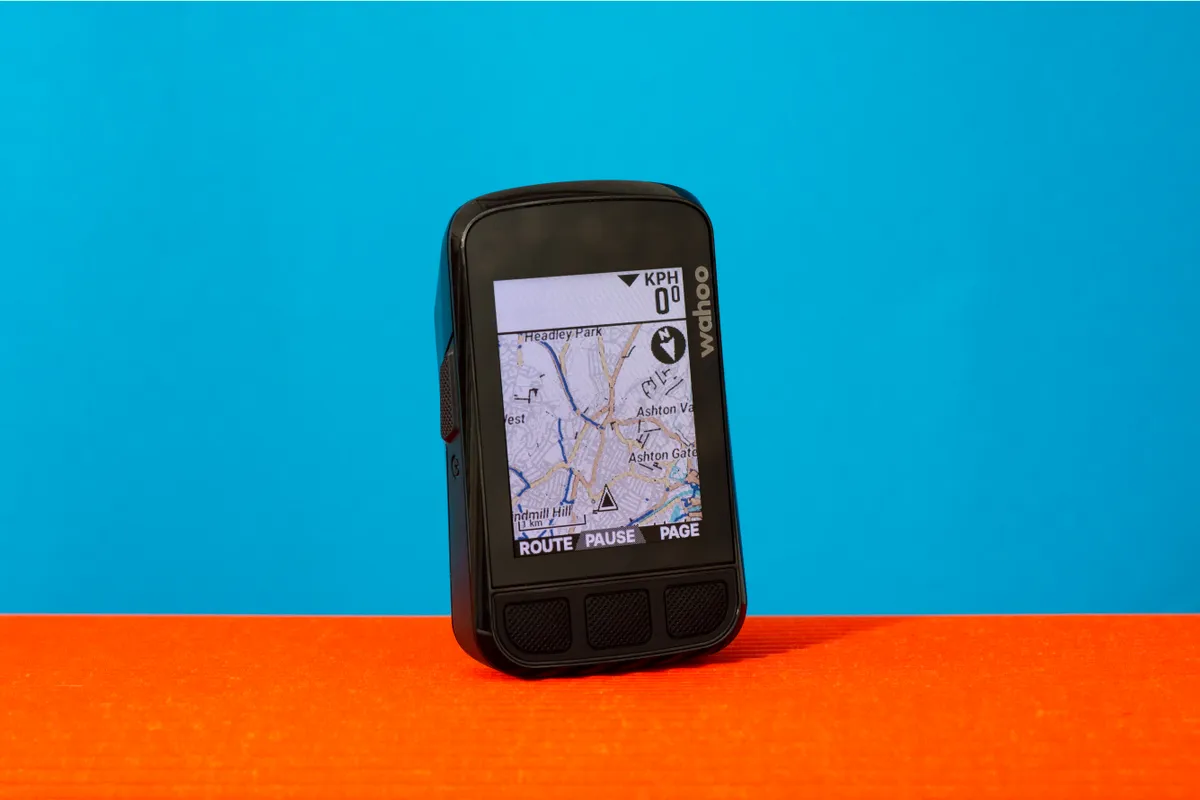
All but the entry-level Garmin 130 Plus, which just has a breadcrumb trail to follow, get mapping with a basemap, and the Elemnt computers come with maps too.
Wahoo has now enhanced its basemaps, with more features shown and improved use of colour. They’re now a closer match to Garmin’s maps, which include street names and mark wooded areas and other features. Garmin also gives you heatmaps to map out cycle-friendly routes to follow.
The top-end Garmin Edge 1040 and the Wahoo Elemnt Roam now give you dual-band GPS reception, although the Elemnt Roam costs considerably less. This improves positional accuracy, particularly if riding under tree cover or in urban environments.
The latest Wahoo Roam also has 32GB of memory, matching Garmin’s Edge 1040 and 1030 devices and allowing you to store plenty of ride and map data.
There are other novel features in the new Elemnt Roam, including public route sharing, which lets you broadcast route files to nearby Wahoo computer users, avoiding the need to email files if you want to share a route.
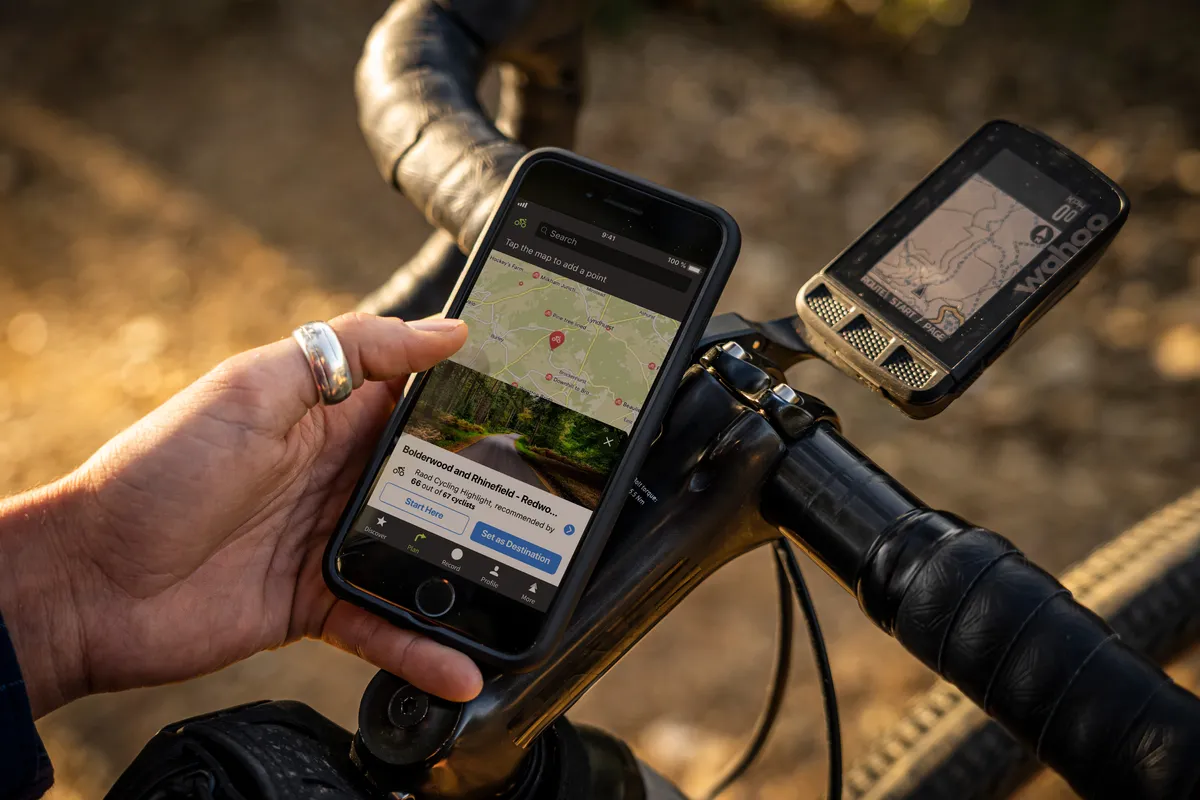
In other respects, Garmin and Wahoo match each other feature-for-feature, with items such as climb profiles, live tracking, radar support and on-device workouts.
The two brands also enable you to configure the data you see as you ride. You’ll get more data fields per screen on the Garmin Edge 1030 Plus and 1040, but fewer on the Edge 130 Plus.
Garmin and Wahoo computers give you plenty of workout stats via their respective phone apps. Garmin Connect is particularly full-featured, giving you loads of stats on training effect and other metrics, whereas the Wahoo app covers the basics unless you subscribe to Wahoo X.
In both cases, you can set up an automatic sync through to Strava, TrainingPeaks or other fitness apps if you want more analysis. You can also link the computers to Komoot for routes and to create a log of your activities.
With its Kickr smart trainer range, Wahoo has good functionality for trainer control, although that is matched by Garmin. Both brands also offer you tight integration into their training environments, Wahoo X and Garmin Connect respectively.
Which one is better, Wahoo or Garmin?
For a long time, Garmin’s bike computers led the field regarding navigation and the depth of features available, from training insights to third-party app integration.
However, the second generation of Elemnt bike computers sees Wahoo keep pace with Garmin, offering many of the same features while continuing to build on its easy integration with your smartphone and other Wahoo devices.
Out of the two brands, Garmin remains the better bet if you need extended battery life. In the middle of its range, Garmin is also the only choice if you want a touchscreen, although bear in mind that this can be difficult to use in the wet, off-road or if you are wearing thick gloves.
Wahoo’s devices are button-operated, making them better for wet conditions, but they can require a lot of button-mashing to get through the menus, as a result.
When it comes to price, Garmin has a larger range of bike computers providing options at different price points. However, if you want features such as dual-band GPS, you’ll pay less for a top-flight Wahoo computer.
Garmin provides many training features for free, whereas you will have to pay for a Wahoo X subscription to unlock certain features if you purchase an Elemnt computer.
Ultimately, whether you consider Garmin or Wahoo to be better will come down to the functionality you desire and where you’re willing to spend your money.
If you want a computer that will work for long adventures while providing plenty of training tools and data to delve into, Garmin might be the best bet for you.
If training features and long battery life aren’t your first priority and you want a computer that is easy and intuitive to use straight out of the box, then Wahoo provides plenty of value for money. You may, however, end up spending more money on a subscription in the future.
